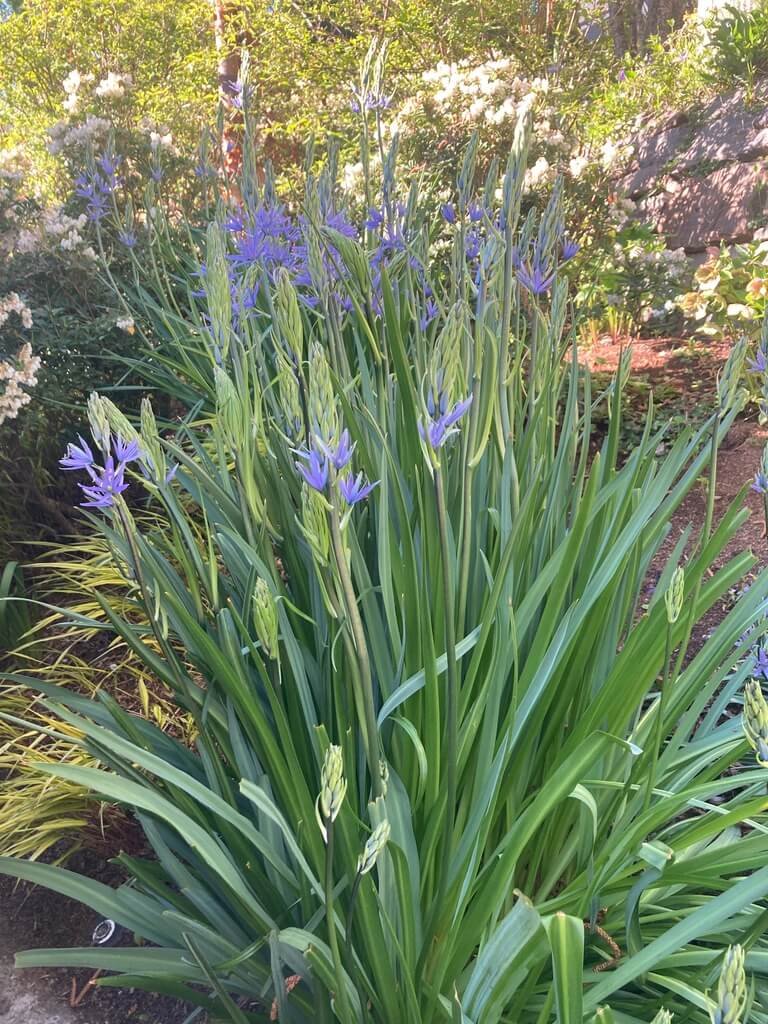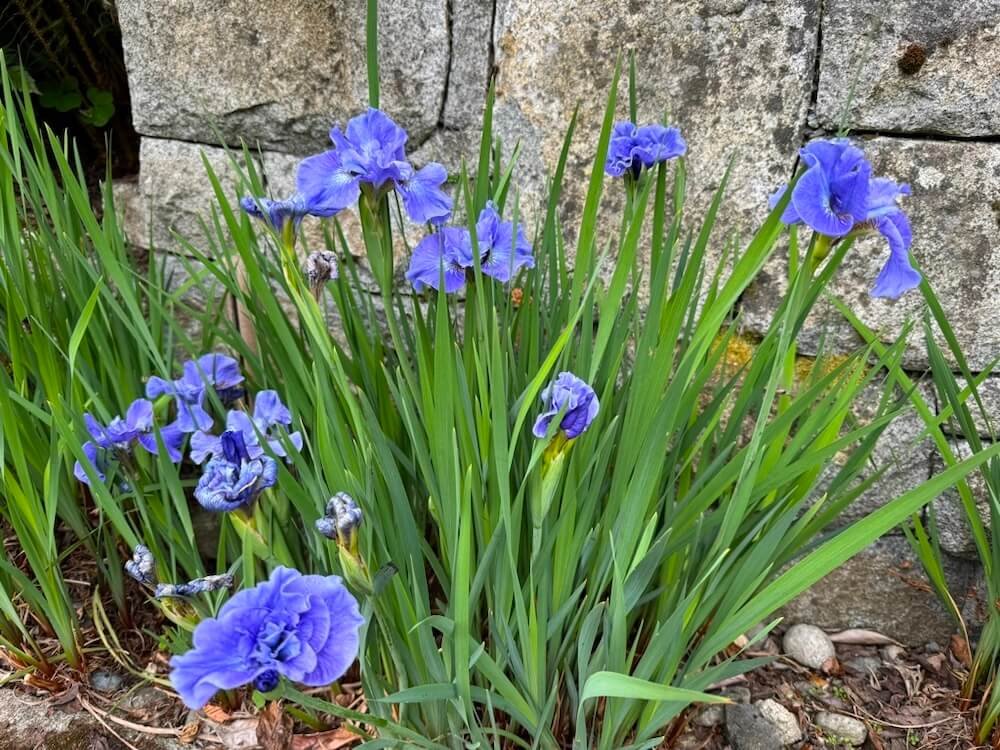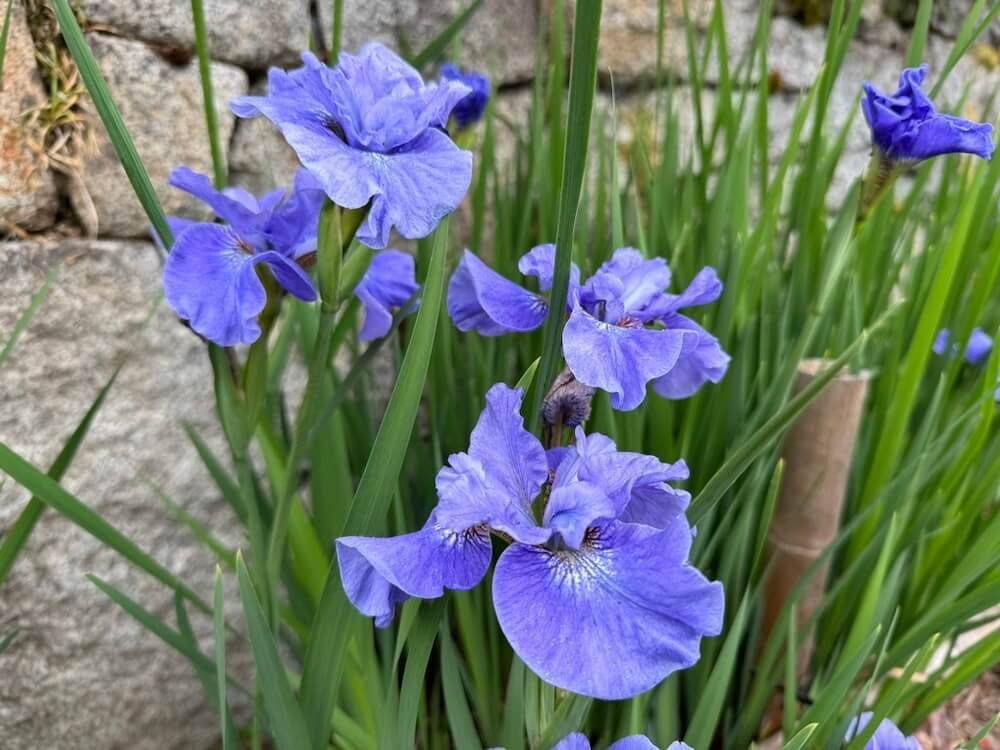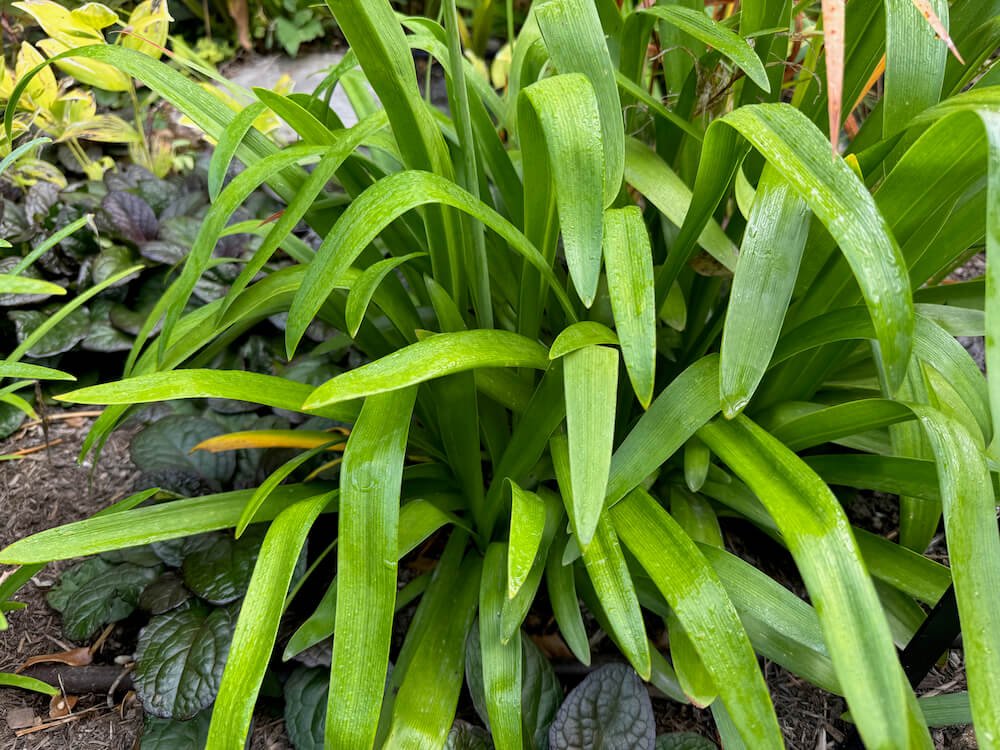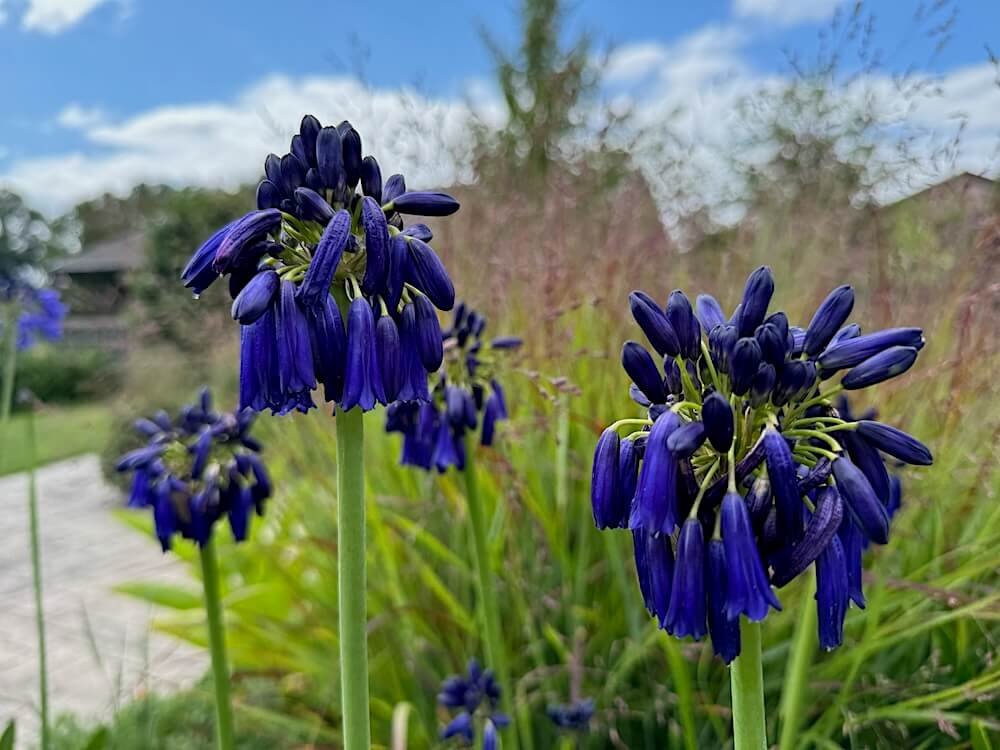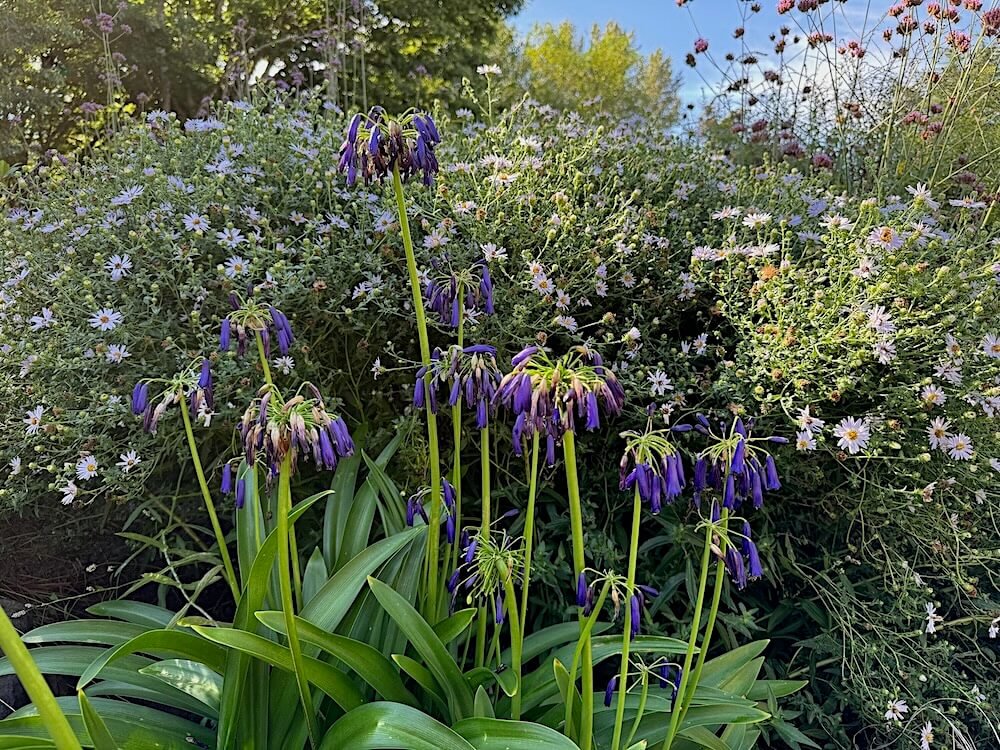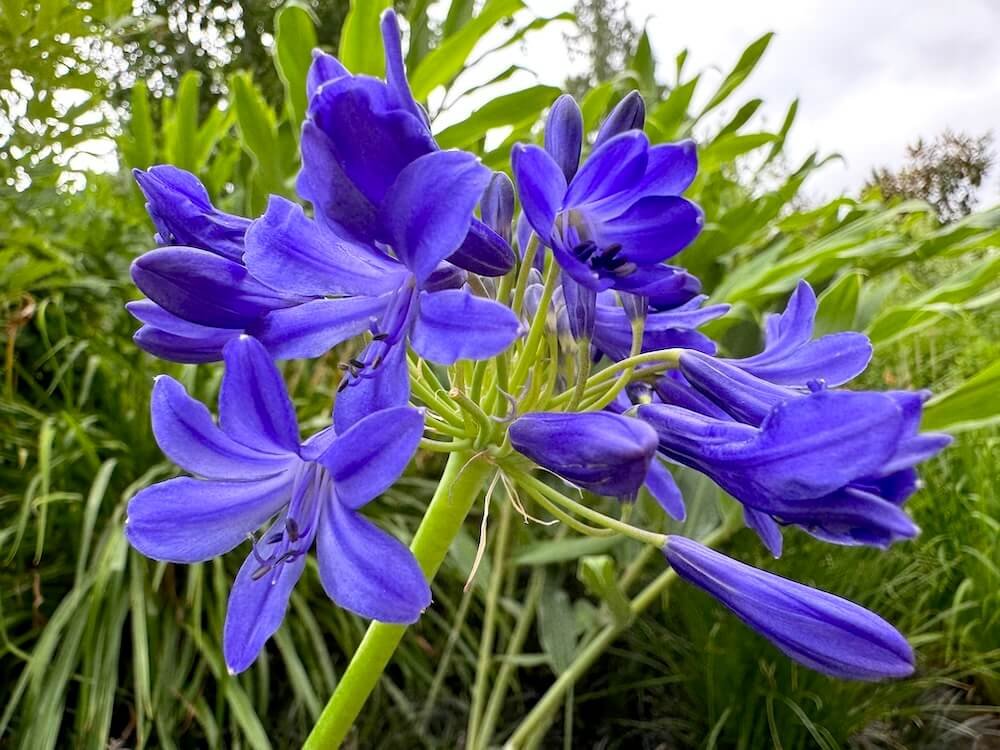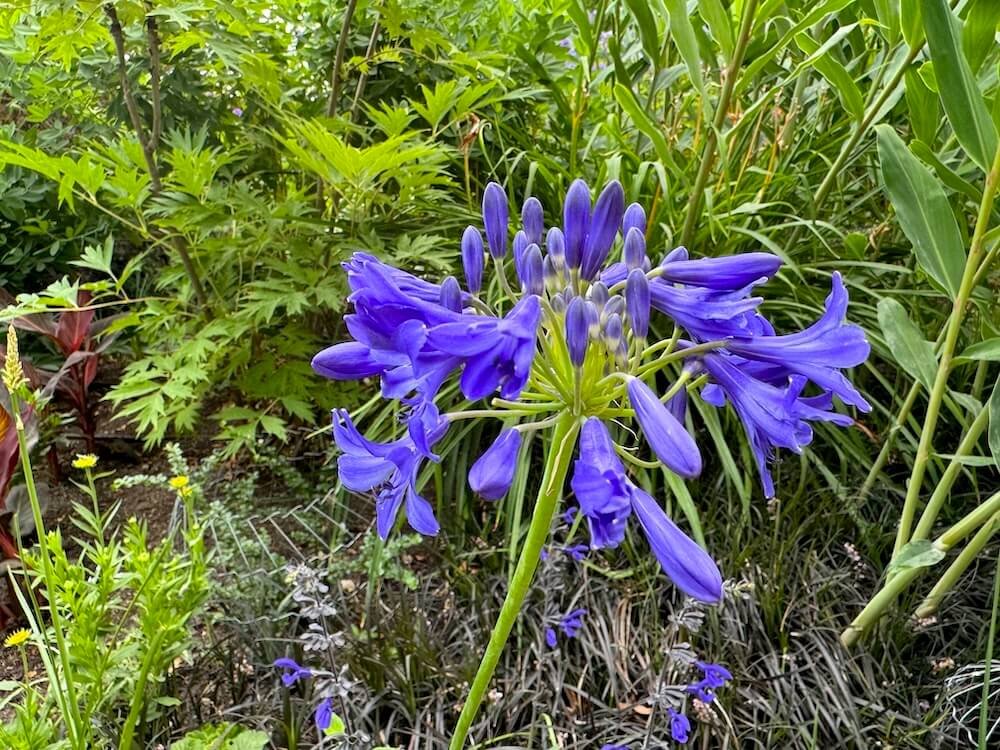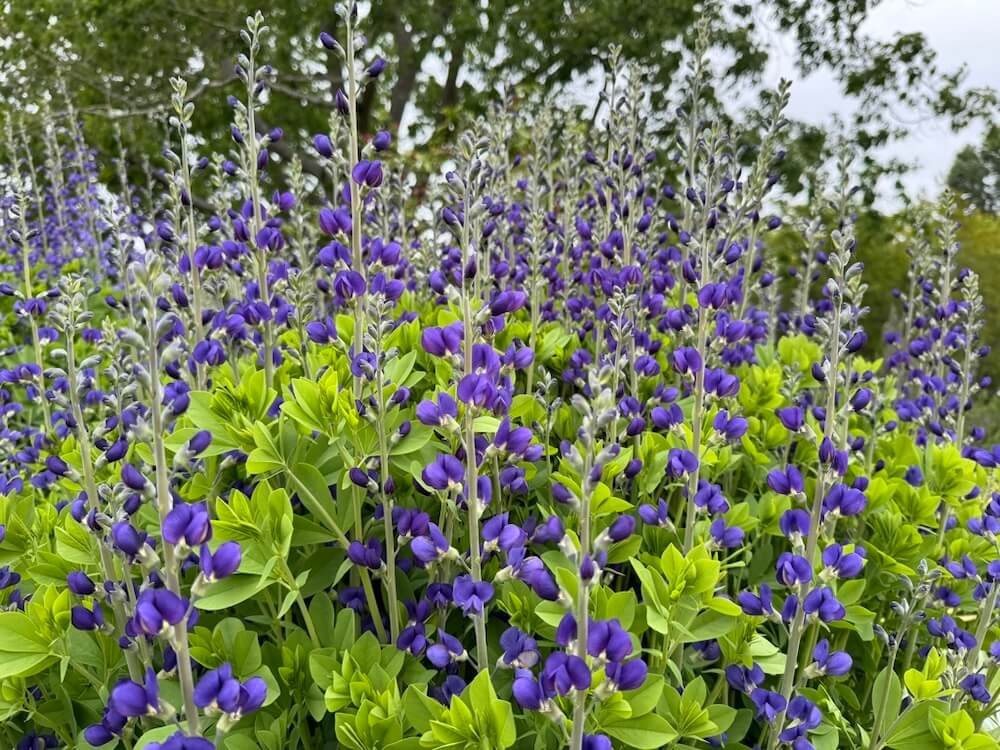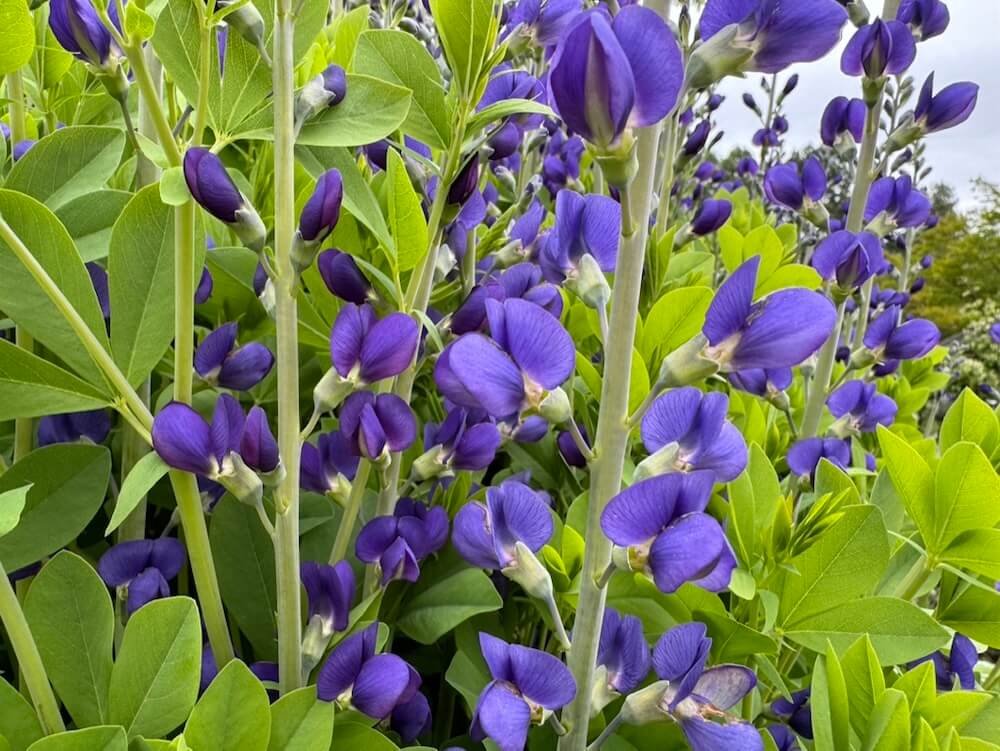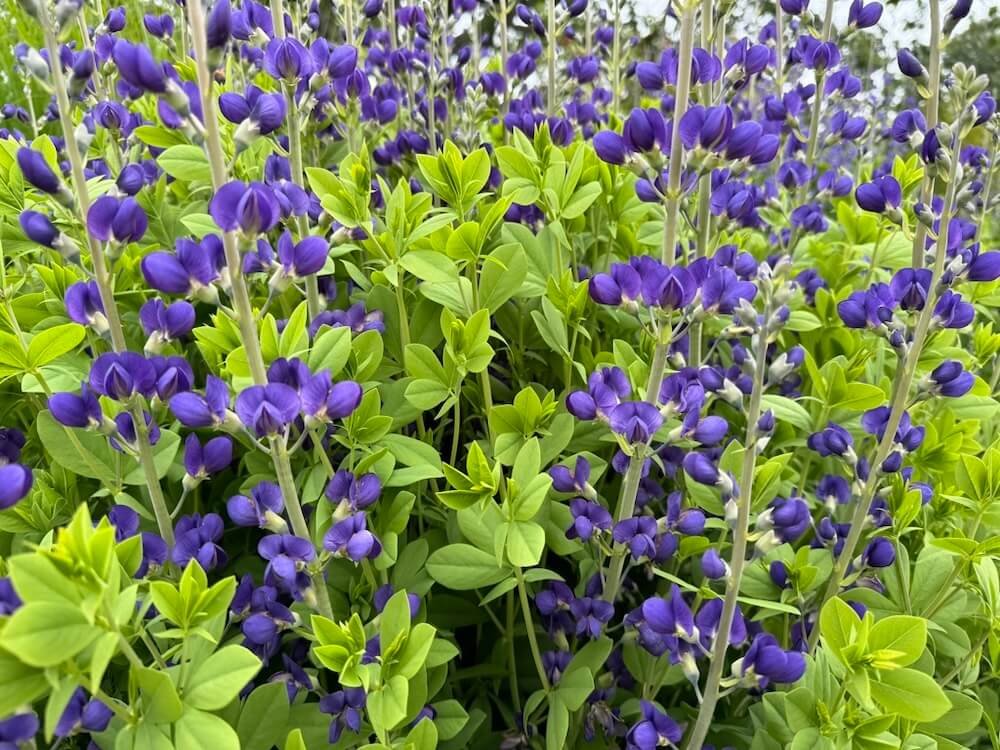DESCRIPTION
Camassia quamash is a perennial bulbous plant native to western North America, thriving in moist meadows, prairies, and along stream banks. Growing 1 to 2 feet tall and up to 1 foot wide, it features linear, grass-like basal leaves in deep green to bluish-green. In late spring to early summer, it produces stunning star-shaped flowers that range from pale to deep blue. Preferring full sun to part shade and moist, well-draining soil, Camassia quamash is low-maintenance, requiring minimal care beyond removing spent flower spikes. Valued for its beautiful blooms and historical significance as a food source for indigenous peoples, it makes a delightful addition to wildflower gardens, meadows, and naturalized areas.
DESCRIPTION
Camassia quamash is a perennial bulbous plant native to western North America, thriving in moist meadows, prairies, and along stream banks. Growing 1 to 2 feet tall and up to 1 foot wide, it features linear, grass-like basal leaves in deep green to bluish-green. In late spring to early summer, it produces stunning star-shaped flowers that range from pale to deep blue. Preferring full sun to part shade and moist, well-draining soil, Camassia quamash is low-maintenance, requiring minimal care beyond removing spent flower spikes. Valued for its beautiful blooms and historical significance as a food source for indigenous peoples, it makes a delightful addition to wildflower gardens, meadows, and naturalized areas.


